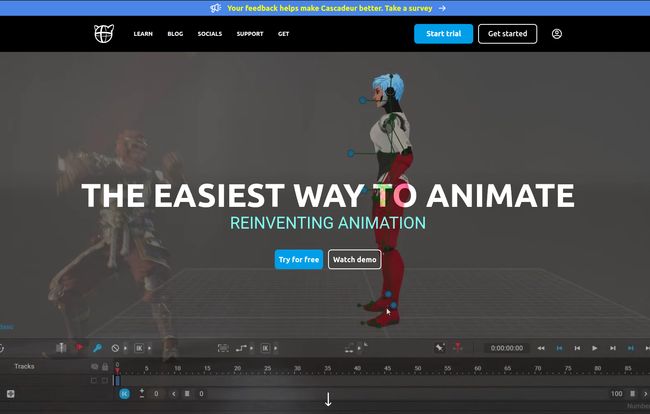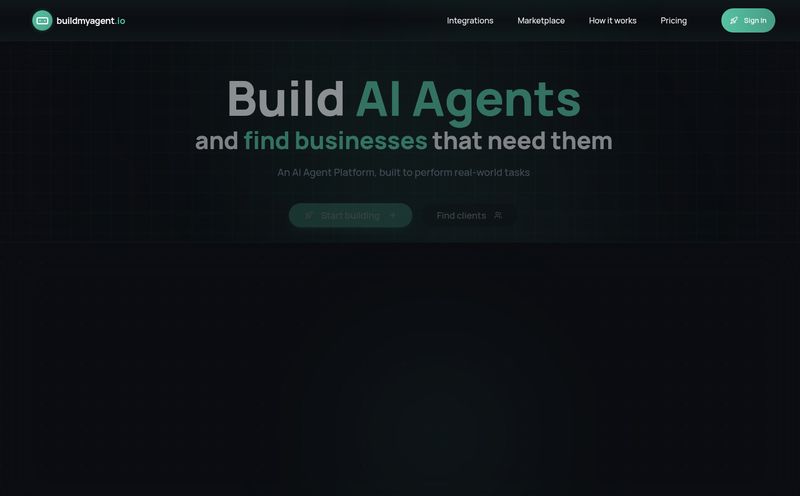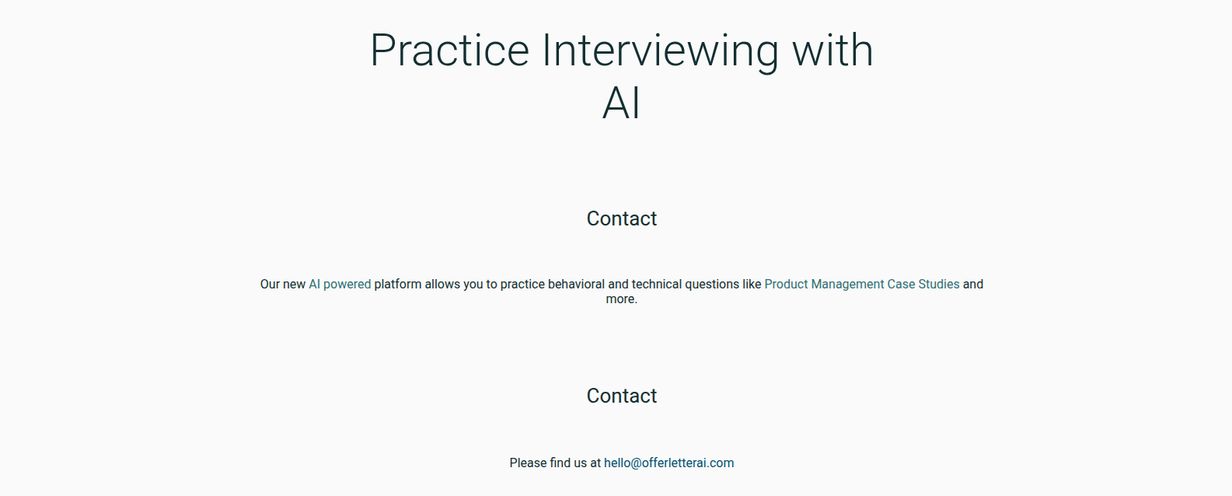If you've ever done 3D character animation, you know the grind. You spend hours setting keyframes, tweaking curves in the graph editor, and fighting with IK rigs that seem to have a mind of their own. And after all that, you hit play, and your character moves with all the weight and grace of a balloon animal in a hurricane. The dreaded 'floaty' animation. We've all been there.
For years, the solution was just... get better. Spend more hours. Tweak more curves. But what if the tools themselves could be smarter? That’s the question a small team of developers, with roots in the video game industry (they worked on titles like Vector and Shadow Fight), asked themselves. Their answer is Cascadeur, and folks, it might just be the breath of fresh air the animation world has been waiting for.
I’ve been keeping an eye on it for a while, and after spending some serious time with the software, I’m ready to talk. Is it really the “easiest way to animate?” Let’s find out.

Visit Cascadeur
So, What is Cascadeur, Exactly?
First off, let’s clear up what it’s not. Cascadeur isn’t a replacement for Blender, Maya, or 3ds Max. You won't be doing any modeling, texturing, or rendering here. Instead, it’s a standalone, specialized tool designed to do one thing and do it exceptionally well: 3D character animation.
Think of it as a dedicated animation stage. You import your character, already modeled and rigged (or you can use their surprisingly quick rigging tool), and you get to work on the performance. The magic happens through its deep understanding of physics and its clever use of AI-assisted tools. It’s built to work with your existing pipeline, letting you easily import and export your work using standard file formats like FBX and DAE. So yeah, it plays nice with Unreal Engine, Unity, Cinema 4D, and all the other big names.
The Secret Sauce: AI and Real-World Physics
This is the core of what makes Cascadeur so different. It’s not just another keyframer. It's built on a foundation of physics-based procedural animation, but it doesn't wrestle control away from you. It’s a collaboration.
AI Posing is Your New Best Friend
Posing a character can be tedious. You move a hand, and the shoulder looks weird. You adjust the hips, and suddenly the feet are clipping through the floor. Cascadeur's AI-assisted posing tools are like having a seasoned animator looking over your shoulder. You can grab a few key points—say, the hands, feet, and head—and the AI interpolates the rest of the body into a natural, physically plausible pose. The spine curves correctly, the pelvis shifts to maintain balance... it just works. It turns hours of micro-adjustments into a few seconds of intuitive motion.
AutoPhysics Brings Your Animation to Life
This is the feature that made my jaw drop. Once you have your key poses, the AutoPhysics tool takes over the in-betweening. It analyzes your poses and generates a physically realistic motion that connects them. It calculates momentum, rotation, and secondary motion, giving your animation a sense of weight and realism that is incredibly difficult to achieve by hand.
Imagine your character jumping. You set the crouch, the apex of the jump, and the landing. Instead of you having to manually arc every single body part, AutoPhysics creates a believable trajectory. The arms swing for momentum, the body follows a proper arc, and the landing has a genuine impact. It’s like being a puppeteer, but your puppet understands gravity. And the best part? It's not a black box. You can still go in and tweak every single frame. It's an assistant, not a replacement.
My Favorite Cascadeur Features
Beyond the headline AI stuff, there are a few quality-of-life features that just make the whole experience smoother.
- Quick Rigging: I've lost countless hours of my life to rigging. Cascadeur’s Quick Rigging tool is a godsend. You can import a basic T-posed character from almost anywhere (like Daz or Mixamo) and the tool helps you quickly map its bones to Cascadeur’s physics rig. It’s not perfect for every complex creature, but for humanoids, it's a massive timesaver.
- Video Reference Tools: Rotoscoping is a classic animation technique, but it can be a chore. Cascadeur lets you import video directly onto a plane in the 3D viewport, making it way easier to match your animation to live-action footage. Paired with the AI posing, it turns a tedious tracing job into a much more creative process.
- Ghosting and Trajectories: The onion-skinning (or 'Ghosts' as they call it) is fantastic. You can see previous and future poses clearly, and the trajectory arcs show you the path of any body part. It gives you this incredible visual feedback that helps you spot awkward jerks or unnatural movements instantly.
Let's Talk Money: The Cascadeur Pricing Plans
Okay, this is often the sticking point. A tool can be amazing, but if it costs a fortune, it's a non-starter for most of us. This is where Cascadeur gets really interesting. They have a very generous pricing model.
There's a Free plan. And it's not one of those garbage 14-day trials. It's free forever. You get access to almost all the core animation tools, including the AutoPhysics and AI posing. The main catches? You're limited to 300 frames per scene and 24 joints per character, and you can't use it for commercial work. But for learning, personal projects, or just seeing if you like it? It's incredible.
Next up is the Indie plan, which at $8 per month (when billed annually) is an absolute steal. This unlocks unlimited frames and joints and, crucially, gives you commercial use rights for individuals or small companies with revenue under $100k. This is the sweet spot for freelancers and indie game devs.
For bigger studios, there are the Pro ($33/month) and Teams ($33/user/month) plans. These add advanced features like Scene Linking and Retargeting mapping, plus higher levels of support. Honestly, for most people reading this, the Free or Indie plan is all you'll ever need.
The Not-So-Shiny Bits
No tool is perfect, and it would be dishonest to pretend Cascadeur is. There are a few things you should know before jumping in.
First, that amazing free plan has its limits. The no commercial use clause is a big one. You can't just animate your indie game's main character for free and then sell the game. You'll need to upgrade to the Indie plan for that. Fair enough, developers need to eat.
Second, the licensing can be a little confusing. To get a perpetual license (meaning you own that version forever), you need to subscribe to an annual plan. If you go month-to-month, you lose access when you stop paying.
Finally, and this is a big one for some creatives, the macOS version requires an Apple M1 or M2 chip. If you're on an older Intel-based Mac, you're out of luck for now. This has been a source of frustration for a chunk of the community, and it's a significant hardware limitation to be aware of.
The Verdict: Is Cascadeur Worth Your Time?
Yes. Absolutely, one hundred percent, yes.
In my opinion, Cascadeur is one of the most exciting pieces of animation software to come out in the last decade. It doesn’t try to be everything. It focuses on the most challenging part of character animation—creating believable, weighty motion—and it knocks it out of the park. It dramatically lowers the barrier to entry for beginners and provides a powerful, physics-driven tool that can speed up the workflow for seasoned professionals.
The learning curve is surprisingly gentle, especially if you have any 3D experience, and the existence of the free version removes any risk. You have nothing to lose by downloading it and giving it a shot. It might just change the way you think about bringing characters to life.
Frequently Asked Questions
- Can I use Cascadeur for commercial projects?
- Yes, but you need one of the paid plans (Indie, Pro, or Teams). The Free version is strictly for non-commercial use and learning purposes.
- What is the main difference between the Free and Indie plans?
- The two biggest differences are commercial rights and export limits. The Indie plan grants you a commercial license (for revenue under $100k/year) and removes the 300-frame and 24-joint export limits that the Free plan has.
- Does Cascadeur work with Blender or Unreal Engine?
- Yes, absolutely. It's designed to fit into existing pipelines. You can easily export your finished animations as FBX or DAE files and import them directly into game engines like Unreal and Unity, or 3D software like Blender, Maya, and Cinema 4D.
- Do I need a powerful computer to run Cascadeur?
- It's moderately demanding, similar to other 3D software. The most important requirement is for Mac users: you MUST have an Apple Silicon (M1, M2, etc.) Mac. It will not run on older Intel-based Macs.
- Is the perpetual license a one-time payment?
- Not exactly. You get a perpetual license for the version of the software that is current when your annual subscription ends. So, you have to pay for a full year of the Indie or Pro plan to get it, but after that year, you can keep using that version forever without further payment.
Conclusion
Cascadeur feels like a peek into the future of animation. It’s a smart, focused tool that leverages AI not to replace the artist, but to empower them. It takes the most tedious, physics-heavy aspects of the job and automates them, freeing you up to focus on what matters: the performance, the character, the story. If you’re an animator of any skill level, you owe it to yourself to download the free version. Go ahead, make your characters jump. I promise they won't look like balloon animals.



